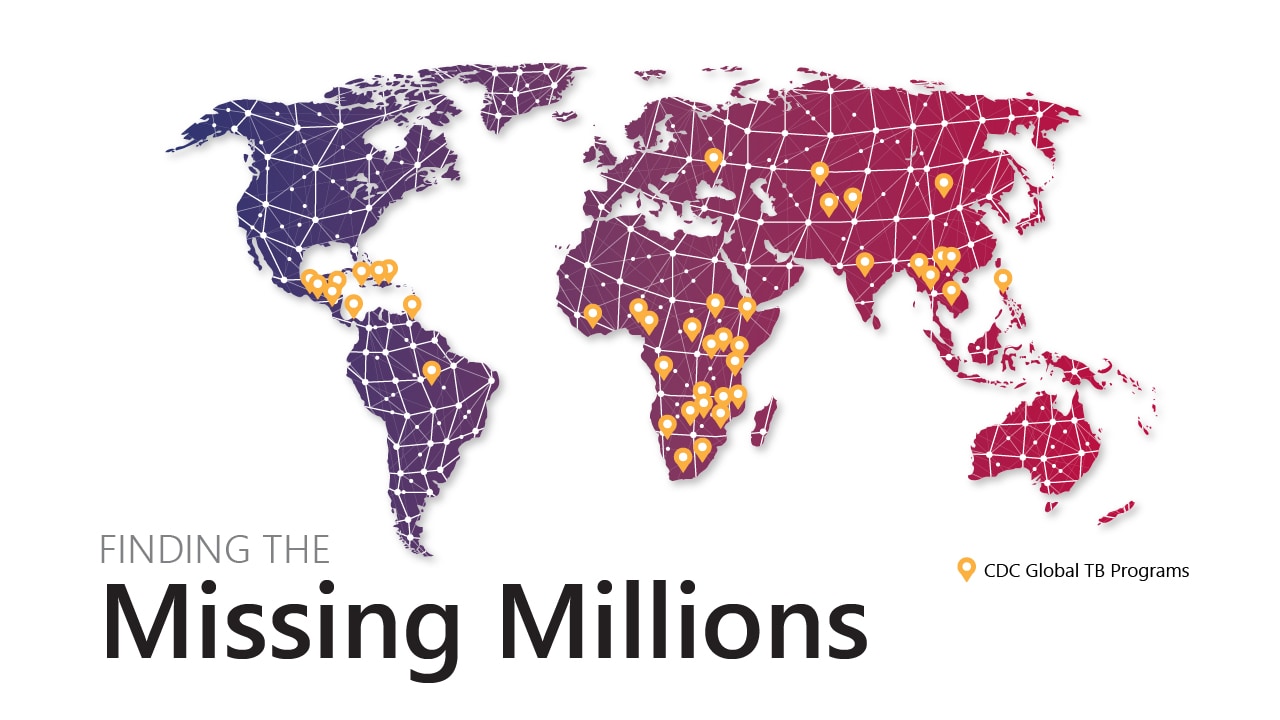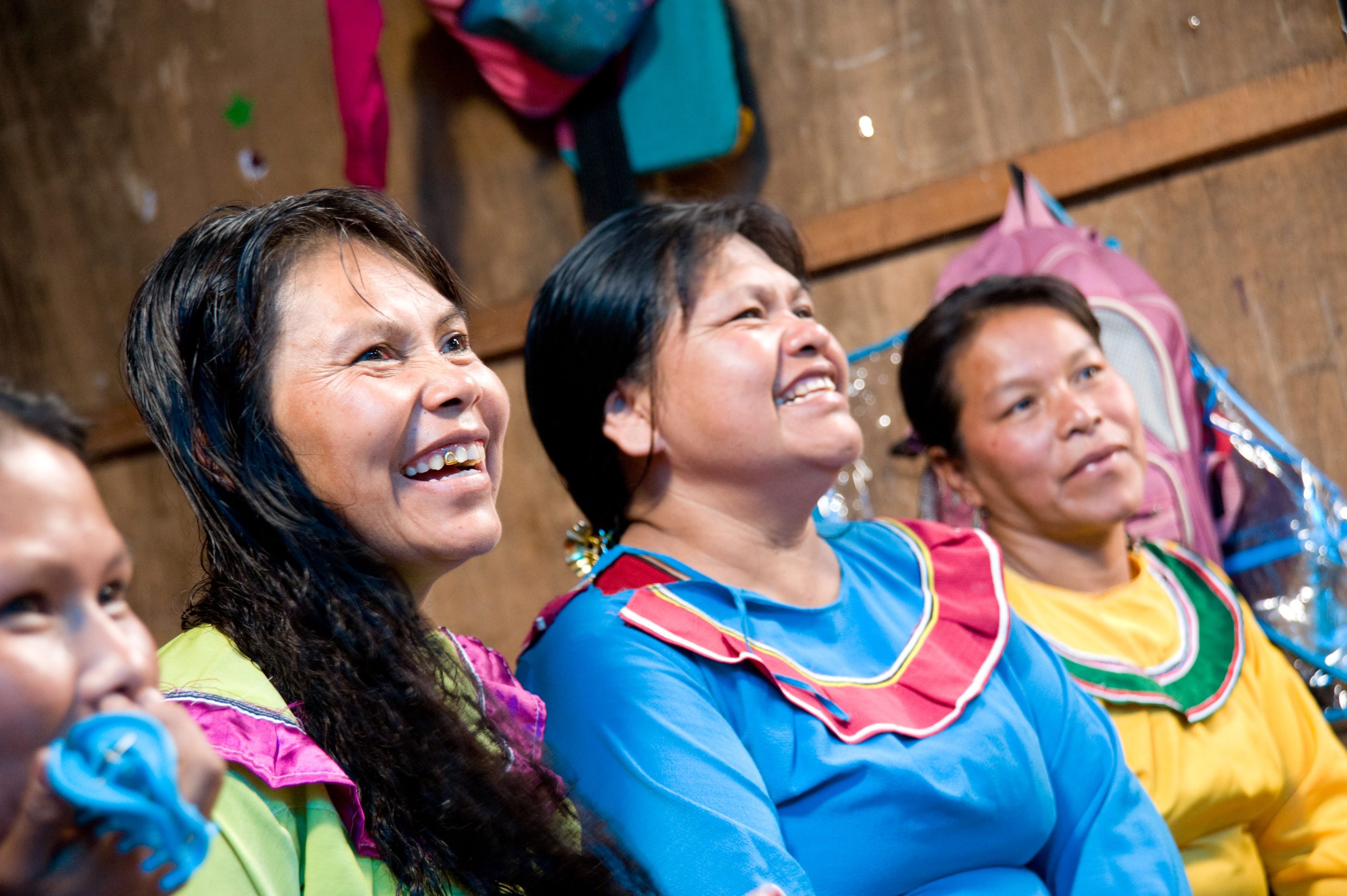At a glance
Despite being preventable and curable, tuberculosis (TB) remains one of the deadliest infectious diseases globally. CDC collaborates with Ministries of Health (MOH), TB and HIV programs, and partners to prevent, diagnose, and treat TB in the United States and worldwide.

Overview
Tuberculosis is the world's deadliest infectious disease, with 30,000 people becoming ill and 3,500 people losing their lives to TB each day1. Nearly 2 billion people—one quarter of the world's population—may be infected with TB.
CDC works with governments and partners in high TB burden countries to apply new solutions to end this persistent health threat. CDC's efforts accelerate progress towards the global End TB Strategy—zero deaths, disease, and suffering due to TB by 2035.
United Nations and PEPFAR commitments
CDC and U.S. agencies developed and supported the United Nations (UN) political declaration to end TB. The U.S. President’s Emergency Plan for AIDS Relief (PEPFAR) also launched a new effort to detect two million active TB cases over the next five years and prevent at least 500,000 TB deaths among people living with HIV (PLHIV). To achieve these commitments, CDC has partnered with national TB and HIV programs to adopt more sensitive screening tools and innovative approaches to end TB.
Preventive treatment
TB is the leading cause of death among PLHIV, who are 16 times more likely to develop TB.1TB preventive treatment (TPT), when combined with HIV treatment, can prevent TB disease and reduce TB deaths among PLHIV by 80 percent.
In 2018, the first UN political declaration to end TB included a commitment to provide TPT to six million PLHIV by 2022. CDC worked with HIV and TB programs to scale TPT widely in PEPFAR countries. CDC surpassed the UN goal by providing TPT to 10 million PLHIV and saving millions of lives. Through CDC's close partnerships with HIV and TB programs, TPT has become the standard of care for PLHIV in PEPFAR countries.
Infection prevention and control
Infection prevention and control (IPC) measures are key to decreasing the global TB burden. IPC measures reduce TB illness and death among patients, PLHIV, and healthcare workers. These efforts improve the quality and safety of healthcare services.
Screening and diagnosis
Each year, 25 percent of adults and 50 percent of children who become ill with TB remain undiagnosed and untreated. This gap results in poorer health outcomes, increased spread of TB in communities, and millions of preventable deaths1.
CDC works with countries to:
- Expand access to better screening.
- Improve identifying new TB infections.
- Strengthen testing strategies.
- Provide training for reliable diagnostic tools.
CDC leads global efforts to screen all PLHIV covered by PEPFAR and possibly start life-saving treatment earlier. In 2024, CDC screened 10.4 million PLHIV for TB—59 percent of PLHIV screened for TB through PEPFAR.
Children and youth
Children and youth are ten times more likely to develop life-threatening TB disease than adults. Despite this, in 2022, 96% of the children who died from TB did not receive TB treatment.
To bridge this gap, CDC incorporates TB screening into routine services and programs for children. In 2024, 95 percent of children and adolescents with TB at CDC-supported facilities had a known HIV status. CDC also helps over 440,000 children living with HIV complete lifesaving TPT in 28 countries.
As one example, CDC and its partners established a virtual Centre of Excellence platform that provides twelve MOHs in sub-Saharan Africa a forum to share best practices to help children with TB in high burden countries.
Treatment
Although TB is curable with antibiotics, remaining on treatment can be challenging. To avoid drug-resistant TB (DR TB), daily medications need to be taken for four to six months. Globally, only 78 percent of people and 48 percent of children received TB treatment in 2023.1
By working closely with MOH, CDC helps:
- Adopt the newest TB and Drug-resistant TB (DR TB) treatments.
- Increase access to and stay on treatment.
- Implement high-quality treatment programs.
CDC also supports using patient-centered delivery models. This includes giving multiple months of medication instead of returning daily to help people complete treatment.
Drug-resistant TB
DR TB is found in every country, and it remains a challenge to eliminate TB. Each year, 400,000 people develop drug-resistant TB, which is more difficult and expensive to treat1.
CDC supports 30 countries with high TB and DR TB rates to build laboratory capacity and improve diagnosis and treatment. CDC also works with partners on genome sequencing to better understand transmission patterns in countries with high rates of DR TB.
Closing remaining gaps
Strong TB responses increase global health security and pandemic preparedness, while saving lives, and improving health in the U.S. and abroad.
TB efforts should focus on children and people living with HIV, pregnant women, miners, mobile communities, and healthcare workers. Additional resources needed include scaling existing tools, developing shorter treatments, more effective diagnostics, strengthening surveillance, expanding laboratory capacity, increasing IPC measures, and an effective vaccine. The global community must quickly address the TB epidemic to create a healthier world.

